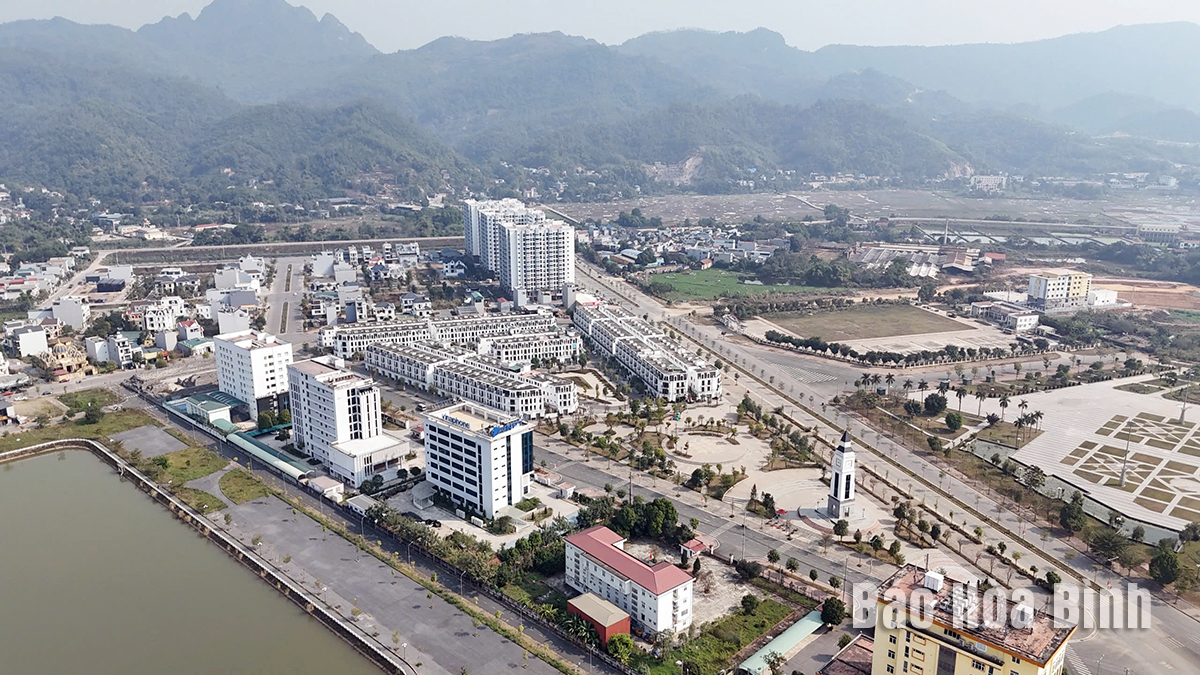After the historic victory on April 30, 1975, which liberated the South and reunified the country, the whole Vietnam embarked on a new mission — promoting peace and reconstructing the nation with century-defining projects. On the fierce Da River, over 30,000 engineers, sappers, and construction workers battled against rocky mountains and raging floods to achieve a remarkable feat. The Hoa Binh Hydropower Plant, the largest of its kind in Southeast Asia at that time, officially began generating electricity, lighting up the North and ushering in a new era of industrialisation.
Hoa Binh city
today.
Nearly four decades since the Hoa Binh Hydropower Plant generated electricity
to the national grid, Hoa Binh city has taken on a new look — youthful, modern,
and full of ambition. From a small town by the Da River, it has grown into the
administrative, economic, and cultural centre of Hoa Binh province, striving to
establish itself as the driving force behind the development of Vietnam’s
northwestern region.
In early 2025, Hoa Binh city was officially recognised as a second-tier urban
area, marking a milestone in its persistent and determined journey. From its
upgrade from a township in 2006, to the merger with the entire Ky Son district
in 2020, and a series of strategic infrastructure projects — such as Hoa Lac -
Hoa Binh Expressway, Huu Nghi Bridge, Thong Nhat Bridge, new urban areas, and
key roads connecting the city centre with national highways, Hoa Binh has
transformed into a dynamic and modern city covering an area of nearly 350
square kilometres and comprising 19 administrative units.
Infrastructure development has led the way, followed by economic growth. The
city has recorded an average annual economic growth rate of nearly 12% over the
past three years. Pham Anh Quy, Chairman of the Hoa Binh city People’s Committee,
said the current per capita income exceeds 80 million VND (over 3,000 USD), 1.5
times higher than the national average. The household poverty rate has dropped
to just 1.38%, with almost no makeshift housing left. More than 82% of the
workforce has shifted to non-agricultural sectors, clearly shaping an urban
economy. From a township once known as the "cradle of electricity",
Hoa Binh is now evolving into a smart city, where nearly 50% of administrative
procedures have been handled online at Level 4.
Today, Hoa Binh city is confidently moving forward on its path of sustainable
development. With a vision to become an eco-friendly, civilised, and modern
city rich in national cultural identity, it continues to improve its technical
infrastructure, accelerate digital transformation, enhance smart services, and
improve the quality of life for its residents.
Do Ba Manh, an octogenarian in Tan Thinh ward who has witnessed countless
changes in the riverside city, said amid the fast-paced urban life, old values
are still preserved. The Muong culture is included in the curriculum of schools
and introduced in museums. The sounds of gongs, along with the Thuong rang and
Bo meng singing in traditional festivals still resonate in the heart of the
city like threads connecting the past and the present.
On the newly-constructed roads, under the newly-planted trees, and beside the
gentle streetlights reflecting on the waters of the Da River, Hoa Binh city is
taking calm yet determined and relentless steps forward. The city changes day
by day but the belief in the people, the hometown, and a future worthy of its
past still remains.



